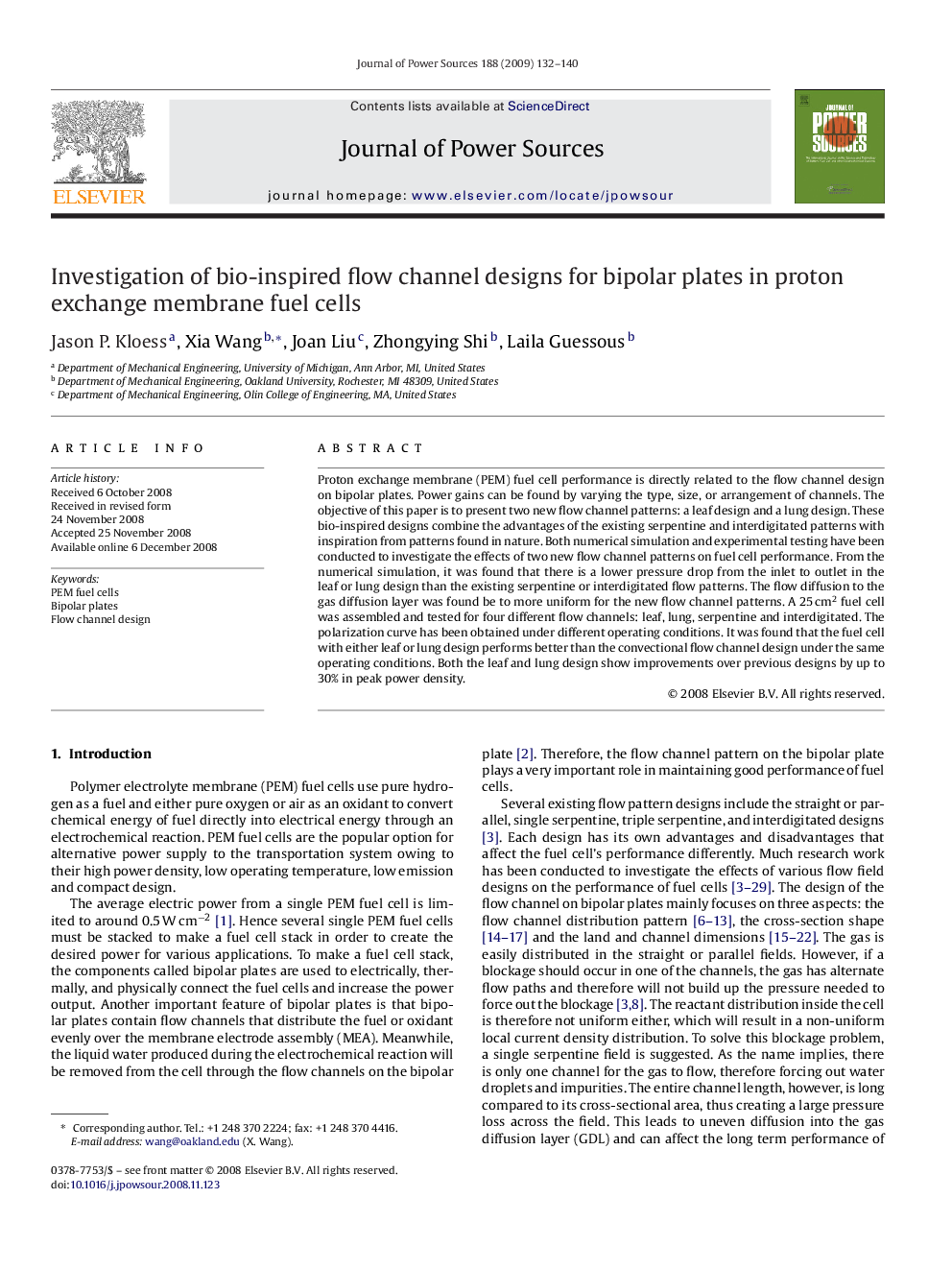| Article ID | Journal | Published Year | Pages | File Type |
|---|---|---|---|---|
| 1294325 | Journal of Power Sources | 2009 | 9 Pages |
Proton exchange membrane (PEM) fuel cell performance is directly related to the flow channel design on bipolar plates. Power gains can be found by varying the type, size, or arrangement of channels. The objective of this paper is to present two new flow channel patterns: a leaf design and a lung design. These bio-inspired designs combine the advantages of the existing serpentine and interdigitated patterns with inspiration from patterns found in nature. Both numerical simulation and experimental testing have been conducted to investigate the effects of two new flow channel patterns on fuel cell performance. From the numerical simulation, it was found that there is a lower pressure drop from the inlet to outlet in the leaf or lung design than the existing serpentine or interdigitated flow patterns. The flow diffusion to the gas diffusion layer was found be to more uniform for the new flow channel patterns. A 25 cm2 fuel cell was assembled and tested for four different flow channels: leaf, lung, serpentine and interdigitated. The polarization curve has been obtained under different operating conditions. It was found that the fuel cell with either leaf or lung design performs better than the convectional flow channel design under the same operating conditions. Both the leaf and lung design show improvements over previous designs by up to 30% in peak power density.
